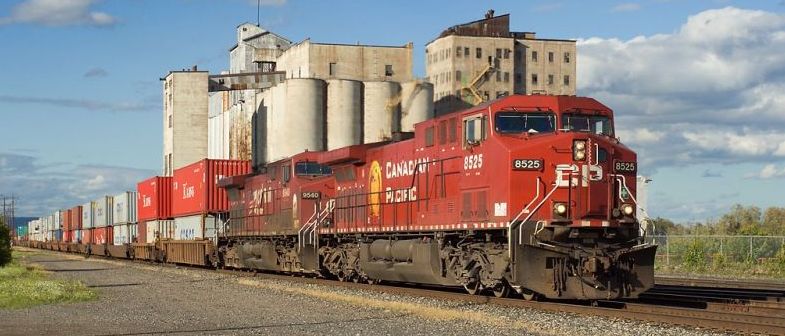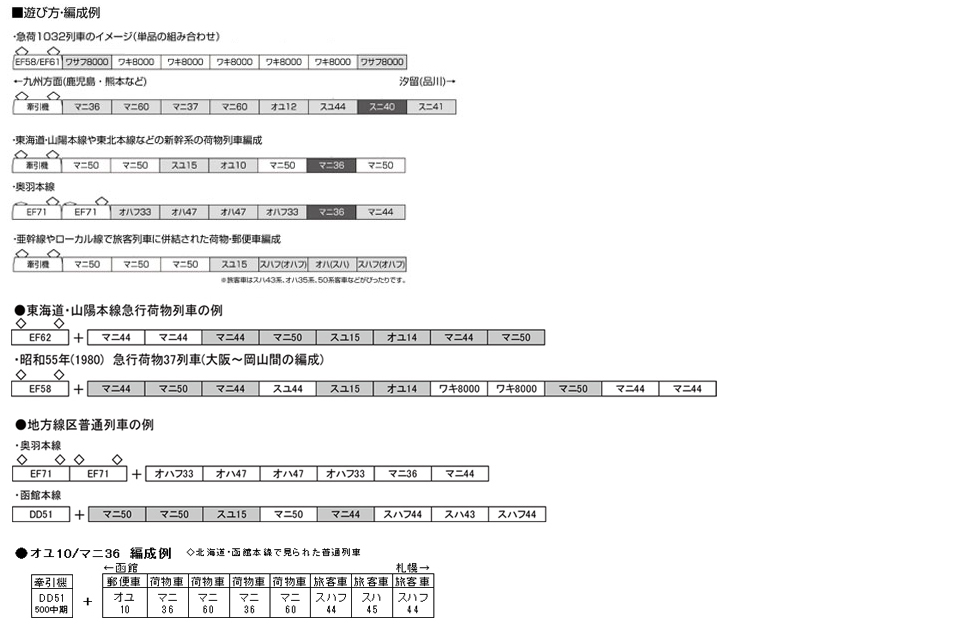
Train Addiction Help Line: 1.866.840.7777
Kato (Japan) - N Scale - MANI 36 (Modified from SURONE 30) - Brown/Gray (SKU 3811-5229)
Available On: October 1, 2023

During the Showa era, when railway transportation played a leading role in logistics, railway mail and parcel transportation was carried out by mail and parcel cars connected to passenger trains. Trains began to be operated, and express cargo trains were also operated on trunk lines such as the Tokaido/Sanyo Main Line and the Tohoku Main Line.
A considerable number of cargo passenger cars that were remodeled from old passenger cars were arranged, and a wide variety of cargo trains composed of steel mail cars, pallet passenger cars, and mail passenger cars were seen.
Composition of Trains

Features
- Mani 36 (Modified Slone 30) was born by remodeling a superior passenger car for luggage transportation. A total of 230 Mani 36s were manufactured, supporting the increasing number of parcels transported. The body color is brown.
- Mani 36 (modified Suha 32) and round roof specification with Suha 32 series as the seed car are selected as prototypes. The body color is brown.
- Selected a modified car from Mani 37 / Slot 60 as a prototype. The body color is blue.
- Select a modified car from Mani 60 / Ohani 61 as a prototype. The body color is brown
● Mani 60 200
· A newly built vehicle as Mani 60 was selected as a prototype. The body color is brown.
- 236 all-steel luggage cars were newly manufactured from 1977 as a replacement for Mani 50 and the old luggage passenger car.
- In addition to being used by being connected to various types of passenger trains, it was diverted to other uses and was active after the abolition of luggage transportation in 1986 (Showa 61).
- Reproduces the body shape according to the 50 series passenger car and the large double-opening side doors unique to the luggage car.
- The truck is equipped with a highly versatile truck-mounted Arnold coupler.
- The notation is set around 1978 (Showa 53). The inspection notation on the wife surface is only for the tail light lighting side
- The car number is "Mani 50 2191" and the affiliation is set to "Kita Sumi"
- Accessories: Driver for light switch
- The form and body shape are roughly divided into three types depending on the year of manufacture, but the final group manufactured in 1981 is the prototype. In 1986 (Showa 61), all cars disappeared by the following year due to the abolition of railroad mail transportation.
- Reproduces the body shape according to the 50 series passenger car and the large double-opening side doors unique to the luggage car.
- The truck is equipped with a highly versatile truck-mounted Arnold coupler.
- The notation is set around 1982 (Showa 57). Inspection notation on the wife's face is only on the tail light lit side
・Car number is set to "Suyu 15 2031", affiliation notation is set to "Kita Sumi"
・Accessories: Driver for light switch So, it was connected to baggage trains and passenger trains of the National Railways, connecting various parts of Japan and transporting mail. The railroad network that stretched all over the country supported the transportation of mail, but in 1986, railroad transportation was completely abolished as rapid delivery was required due to the development of air and truck transportation. turned off.
- Low roof of distributed cooler
- Tail light (one side) decorating the end of the train lights up (with tail light off switch)
- Oyu 12 / Oyu 12 is a convoy mail car (a type of mail car dedicated to transportation that does not sort inside the car) manufactured by incorporating the structure of the 10 series lightweight passenger car
- Oyu 12 / Oyu 12 is a convoy mail car (a type of mail car dedicated to transportation that does not sort inside the car) manufactured by incorporating the structure of the 10 series lightweight passenger car
・Conductor's compartment side: with light switch
・Body color There are brown and blue depending on the era

$30.00 US


